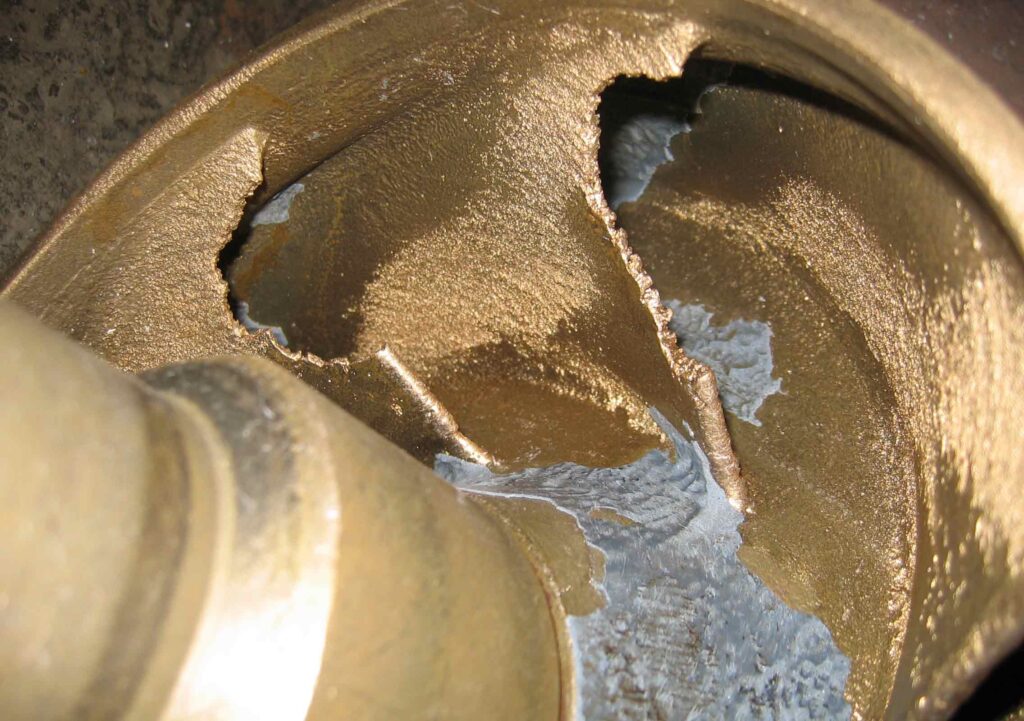An often problematic encounter among centrifugal pumps and other propeller/impeller based mechanics is something we’ve discussed before, cavitation. Not only does cavitation decrease the lifespan of these parts but can present very aggravating situations for employees and customers alike. However, with our products you can prevent cavitation and even repair it.
What Is Cavitation?
Cavitation is caused by water flow within the pump that decreases in pressure and increases flow velocity. The greater the pump flow rate, the greater the pressure drop between pump suction and the eye of the impeller. If the pressure drop is large enough, or if the temperature is high enough, the pressure drop may be sufficient enough to cause the liquid to flash to a vapor form. These vapor bubbles sweep along the impeller, following them to collapse and cause cavitation over time. Cavitation in a centrifugal pump has a significant impact on pump performance. Cavitation degrades the performance of a pump, resulting in a fluctuating flow rate and discharge pressure. Also, cavitation is very destructive to pumps internal components.
The PES Solution

An extremely small number of centrifugal pumps are designed to operate under conditions where cavitation is unavoidable. These pumps must be specifically designed and maintained to withstand the small amount of cavitation that occurs during their operation. Most centrifugal pumps are not designed to handle sustained cavitation. However, that’s where we, PES Solutions, comes in. We have designed an epoxy, PES 201, that shields, protects, and even repairs propellers and impellers from cavitation. When applying our epoxy solution to the impeller of the pump, all the surfaces that are to be coated were grit blasted to have a reliable surface for epoxy coating. All the surfaces in question are then washed down with a degreaser for good measure. The pieces of the pump that are damaged are then repaired, then coated with an epoxy solution. This epoxy will usually be applied with 2 or so coats, and protects the pump from the effects of corrosion and erosion. After the product cures, the pump can then be returned to service as good as new.
While a proper solution to eradicate corrosion and erosion completely has not yet been discovered, our epoxy is guaranteed to extend the working life of these parts by leaps and bounds.


Cavitations are a common problem among centrifugal pumps. I hope this great needed solution spreads!